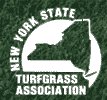So there’s good news and bad news about mushrooms in your lawn. The bad news is there’s not much you can do about them.
The good news is, it doesn’t really matter. They’re mostly harmless. They’re also pretty fascinating. More on this later.
But mushrooms have some fungi cousins that aren’t so harmless. Depending on the type of lawn fungus, they can make a mess of your lawn. Let’s take a look at the different types of lawn fungus — and what you can and can’t do about them.
Lawn Fungus First Stop: Mushrooms
The first thing to know about mushrooms is they don’t do any damage to your lawn. Actually, they’re sort of helpful. They assist with the breakdown of organic matter, which makes the soil richer.
Still, a lot of lawn lovers aren’t crazy about them popping their little umbrella-like heads up all over the turf. And some mushrooms are poisonous and pose a danger to children and pets.
But the only thing you can do about mushrooms is to rake them out or pluck them out of your lawn by hand — wearing gloves. Forget about fungicides; they don’t work on mushrooms, and the reason why is pretty fascinating.
Mushrooms are actually the fruit of large fungi that live underground and feed off decaying matter in the soil.
The part you see is there to spread new spores to create more mushroom colonies. The mushrooms are alive because of what’s happening underground.
This underground structure of the mushroom fungus is huge and can stick around for years. The mushrooms often pop up after a lot of rain. Then they go away, as mysteriously as they arrived.
Tips For Preventing Mushrooms & Fungus Control
There are a few things you can do to reduce the number of mushrooms in your yard:
Remove rotting wood. Grind out tree stumps and remove any fallen rotting branches to reduce the mushrooms’ food supply. Don’t over water. Water less, and the mushrooms will go away as the soil dries out.
Improve drainage. Aerate your lawn to improve soil drainage.
Let the light in. Thin trees and shrubs to let in more sunlight and increase air circulation in damp, shady areas.
Beyond Mushrooms — 8 Common Lawn Fungus Types
While mushrooms are pretty harmless to your lawn, other types of lawn fungus common in New York and Connecticut can do some damage. Here’s a look at lawn fungus control for the most common varieties.
Dollar Spot
How to identify dollar spot: Common on golf courses, dollar spot produces two- to six-inch straw-colored circles. Early in the morning, when the grass is covered with dew, a faint cobweb-like growth may show up.
How to prevent dollar spot: Proper fertilization and irrigation help, as well as adding compost. If your grass needs nitrogen, it’s more likely to develop dollar spot. Keep thatch to a minimum.
How to treat dollar spot: Fungicides may be necessary if the disease progresses.
Brown Patch
How to identify brown patch: Brown patch typically starts as a small spot, but as the disease progresses, it takes on a circular or sometimes a horseshoe shape. It can grow to several feet across or larger.
How to prevent brown patch: Aerate often, reduce shade and when you fertilize, go easy on the nitrogen. Avoid watering late in the day.
How to treat brown patch: Fungicide.
Leaf Spot
How to identify leaf spot: Purplish red and brown spots with tan centers appear along the grass blades’ borders. The tips of the grass may die, and the blades become thin.
How to prevent leaf spot: Avoid evening watering and cut back on the nitrogen fertilizer. Remove excess thatch, the matted layer of plant material between the soil surface and the grass.
How to treat leaf spot: Fungicides may be needed to control leaf spot. They work best when applied as the spots first show up. Once small patches of lawn begin to die, fungicides are less effective.
Fairy Rings
How to identify fairy rings: Sometimes mushrooms will form large circular patches in lawns, called fairy rings. They sound charming and magical, but if the circles expand, the grass inside can die.
How to prevent fairy rings: Fairy rings feed on decaying organic matter, so they often appear around decaying wood or a thick thatch layer in the turf. Remove any of these hot spots.
How to treat fairy rings: Like any mushrooms, fairy rings are difficult to get rid of, as most of the growth is underground. Rake them out or pick them by hand, wearing gloves. Or leave them alone, and they’ll eventually disappear.
Red Thread
How to identify red thread: Irregular areas, from several inches to several feet across, develop a whitish to a pinkish color. In wet weather the affected leaves are covered with a pink fungus, then bright red threadlike strands.
How to prevent red thread: If soil nitrogen levels are low, fertilizing the lawn may help it to recover more rapidly. Deep watering, as opposed to frequent light watering, may help to reduce damage. Collect grass clippings when the disease is active to keep it from spreading.
How to treat red thread: It will typically go away on its own.
Rust
How to identify rust: When rust is severe, the lawn may have a yellowish to reddish-orange appearance. A red-orange dust fills the air when the grass is mowed. The grass blades turn yellow, wither and die.
How to prevent rust: A healthy lawn is the best defense, with adequate fertilization and watering.
How to treat rust: Fungicides might be needed if rust is severe. When you mow, be sure to remove the clippings.
Snow Mold
How to identify snow mold: Snow mold appears in the spring as the snow melts off lawns. Circular straw-colored patches develop and the grass has a matted appearance and may look gray and moldy. It typically won’t kill your grass — it just looks bad.
How to prevent snow mold: Mow your lawn late in the season down to about two inches, so that the grass doesn’t lay over on itself. Fall aeration can help, too, by opening up the soil.
How to treat snow mold: The lawn will recover soon on its own. A little light raking will help speed the process, but be gentle. Aggressive raking can kill the grass.
Pythium
How to identify pythium: Pythium occurs during hot, humid weather. Circular to irregular spots about one to six inches appear. Early in the morning, the grass feels slimy or greasy. Later the grass in these spots dies, and the dead grass becomes light tan and shriveled.
How to prevent pythium: Dethatch and avoid overwatering, especially late in the day when the grass may stay wet all night. Avoid excess nitrogen fertilizer in hot weather.
How to treat pythium: No fungicides for Pythium control are available to homeowners, but there are several commercially applied products that are effective.
Neave Knows Lawn Fungus Control
Neave Lawn Care has experts on staff who know how to treat lawn fungus and can help you identify and control your lawn fungus problem.
Many of the steps experts recommend to prevent lawn fungi — fertilizing, dethatching, aerating — are part of the comprehensive array of services we provide.
A great place to start is with our free lawn analysis. A Neave Lawn Care specialist will visit your property to analyze the health and condition of all your outdoor plant life.
It’s your chance to ask as many questions as you’d like and point out any concerns about your lawn and plant life. We’ll offer advice and solutions, and we can easily work these in to your lawn care service package. You can build a personalized lawn care service package that perfectly suits your needs.
If you’re in the Hudson Valley, call us at (845) 463-0592. If you’re in Westchester County, call (914) 271-7996; from Connecticut, dial (203) 212-4800. Or, fill out our simple web form, and and we’ll contact you. Your driveway never lets you down. Treat it to a nice new coat.























